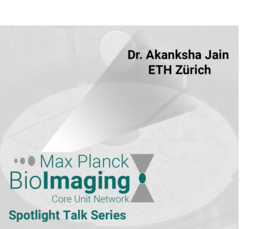4D quantitative light sheet imaging and analysis to study extra embryonic tissue morphogenesis in Tribolium embryos
Spotlight Talk: 4D quantitative light sheet imaging and analysis to study extra embryonic tissue morphogenesis in Tribolium embryos
- Date: Nov 24, 2020
- Time: 03:00 PM (Local Time Germany)
- Speaker: Dr. Akanksha Jain
- Post doctoral scientist at the ETH-Zürich in the Department of Biosystems Science and Engineering, PhD at the Max Planck Institute of Molecular Cell Biology and Genetics in Dresden
- Location: web-talk
- Room: Zoom-Meeting
- Host: Max Planck BioImaging Core Unit Network - Spotlight Talks

Many animal embryos pull and close an epithelial sheet around the ellipsoidal egg surface during a gastrulation process known as epiboly. The ovoidal geometry dictates that the epithelial sheet first expands and subsequently compacts. Moreover, the spreading epithelium is mechanically stressed and this stress needs to be released. Here we show that during extraembryonic tissue (serosa) epiboly in the insect Tribolium castaneum, the non-proliferative serosa becomes regionalized into a solid-like dorsal region with larger non-rearranging cells, and a more fluid-like ventral region surrounding the leading edge with smaller cells undergoing intercalations. Our results suggest that a heterogeneous actomyosin cable contributes to the fluidization of the leading edge by driving sequential eviction and intercalation of individual cells away from the serosa margin. Since this developmental solution utilized during epiboly resembles the mechanism of wound healing, we propose actomyosin cable-driven local tissue fluidization as a conserved morphogenetic module for closure of epithelial gaps.